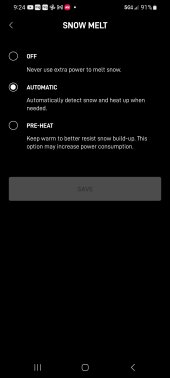csp99
New Member
Hi everyone. First time posting, pretty new to solar.
We ran out of battery at our recreational property while we were gone for the week, and I'm wondering if someone might be able to point me in the right direction.
Setup is...
- 4x 100w panels, south facing
- 40a MPPT controller
- 4x 200ah 6v batteries in series
- 1100w inverter
Had been turning Starlink off when not in use but I left it on last week while we were gone to see if the system could handle it full-time. It did not. Left on Saturday and came back Friday to dead batteries. It was a pretty gloomy week, fair bit of rain and clouds, but I had figured I had more than enough battery.
My thinking was...
- Batteries are about 200 ah each, so in series that makes 400 ah usable?
- 400 ah x 12v = 4,800 wh.
- I believe Starlink takes about 20 watts per hour when not in use. It's set to sleep, I believe, 6 hours a night but lets say 4 for a round number.
- 4,800 wh ÷ 20 w/h = 240 hrs (10 days) the batteries ought to be able to run Starlink...? We lasted somewhere under 5.5 days, not including whatever was being generated during the partially-sunny week.
I must be wrong somewhere in there, just not sure where?
We ran out of battery at our recreational property while we were gone for the week, and I'm wondering if someone might be able to point me in the right direction.
Setup is...
- 4x 100w panels, south facing
- 40a MPPT controller
- 4x 200ah 6v batteries in series
- 1100w inverter
Had been turning Starlink off when not in use but I left it on last week while we were gone to see if the system could handle it full-time. It did not. Left on Saturday and came back Friday to dead batteries. It was a pretty gloomy week, fair bit of rain and clouds, but I had figured I had more than enough battery.
My thinking was...
- Batteries are about 200 ah each, so in series that makes 400 ah usable?
- 400 ah x 12v = 4,800 wh.
- I believe Starlink takes about 20 watts per hour when not in use. It's set to sleep, I believe, 6 hours a night but lets say 4 for a round number.
- 4,800 wh ÷ 20 w/h = 240 hrs (10 days) the batteries ought to be able to run Starlink...? We lasted somewhere under 5.5 days, not including whatever was being generated during the partially-sunny week.
I must be wrong somewhere in there, just not sure where?




